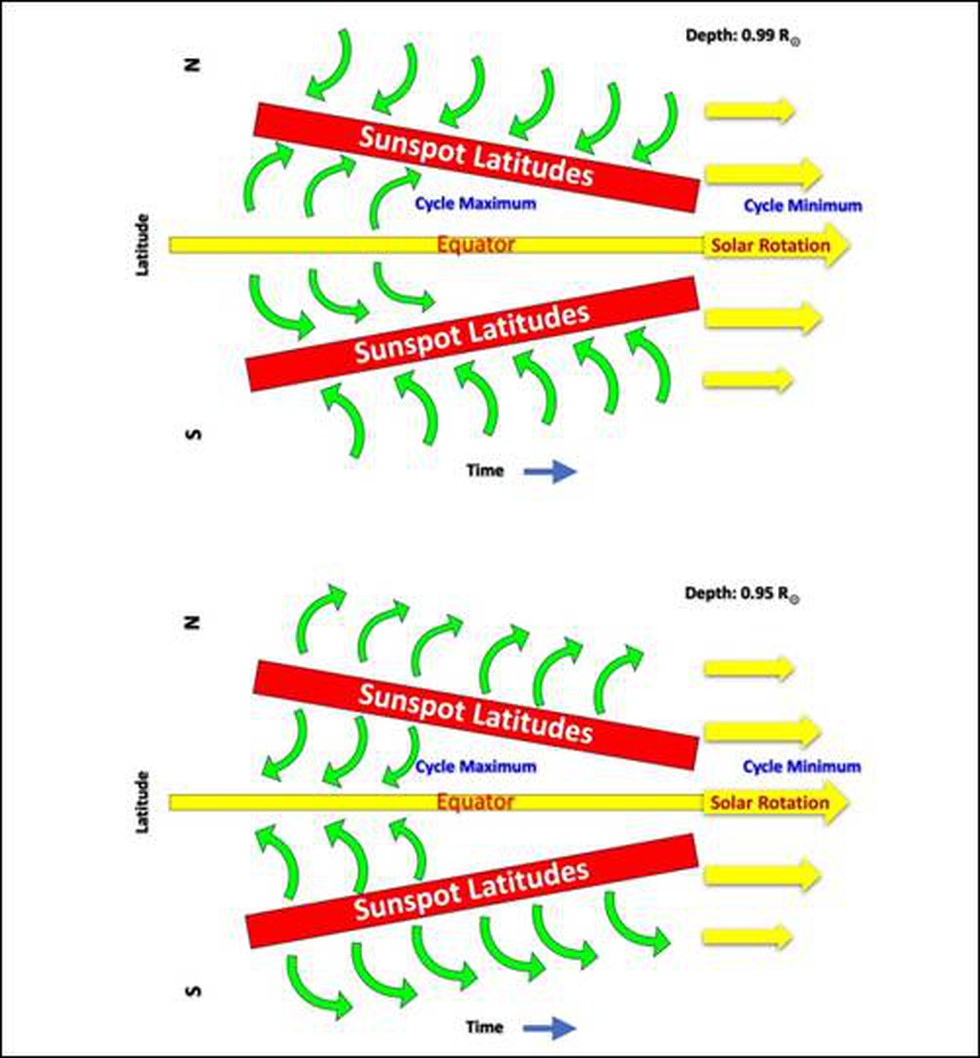
Near-Surface Shear Layer (NSSL)

01.05.2025
Near-Surface Shear Layer (NSSL)
|
For Prelims: About Near-Surface Shear Layer (NSSL) & Key Findings, |
Why in the news?
An international team of solar physicists, including scientists from the Indian Institute of Astrophysics (IIA), has mapped dynamic plasma currents in the Sun’s Near-Surface Shear Layer (NSSL), revealing patterns that correlate with the Sun’s 11-year magnetic activity (sunspot) cycle.
About Near-Surface Shear Layer (NSSL) & Key Findings
- The Near-Surface Shear Layer (NSSL) is a crucial region located just beneath the Sun’s visible surface, extending to a depth of about 35,000 km.
- In the NSSL, the Sun's angular velocity (rotation speed) decreases rapidly with radius, creating a rotational shear that varies with depth, latitude, and solar magnetic activity.
- The study revealed surface plasma flows converge towards sunspot latitudes but reverse midway in the NSSL and flow outward, forming large circulation cells.
- These flows are shaped by the Sun's rotation and the Coriolis force, which also influences Earth's hurricanes. This connection helps explain how the Sun's spin behaviour varies with depth.
- Despite being dynamic, these localised flows do not drive the Sun's large-scale zonal flows, known as torsional oscillations, implying the presence of deeper unknown forces in the Sun’s interior.
Techniques Used:
- Scientists employed helioseismology, a method that uses sound waves travelling inside the Sun to map internal structures and dynamics.
- They used over a decade’s worth of data from:
- NASA’s Solar Dynamics Observatory (SDO), specifically the Helioseismic and Magnetic Imager (HMI), and
- The Global Oscillations Network Group (GONG) of the National Solar Observatory (NSO), USA.
- The research confirmed the findings using 3D velocity maps of sunspot regions, showing matching surface inflows and deeper outflows.
Source: The Hindu
With reference to the Near-Surface Shear Layer (NSSL), consider the following statements
1.The Near-Surface Shear Layer (NSSL) is a crucial region located just beneath the earth’s non-visible surface.
2.In the NSSL, the earth's angular velocity (rotation speed) decreases rapidly with radius.
Which of the statements given above is/are correct?
A.1 only
B.2 only
C.Both 1 and 2
D.Neither 1 nor 2
Answer D